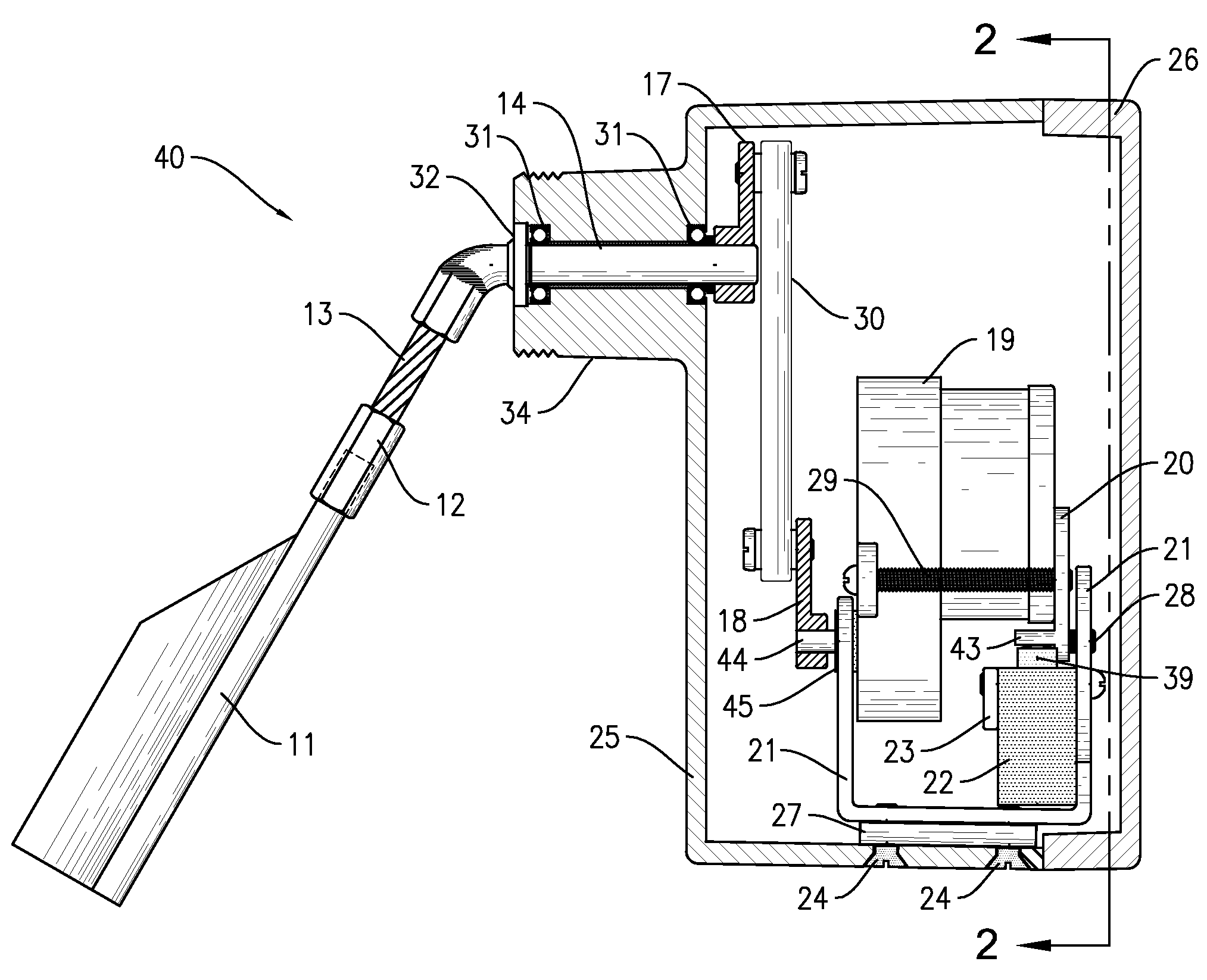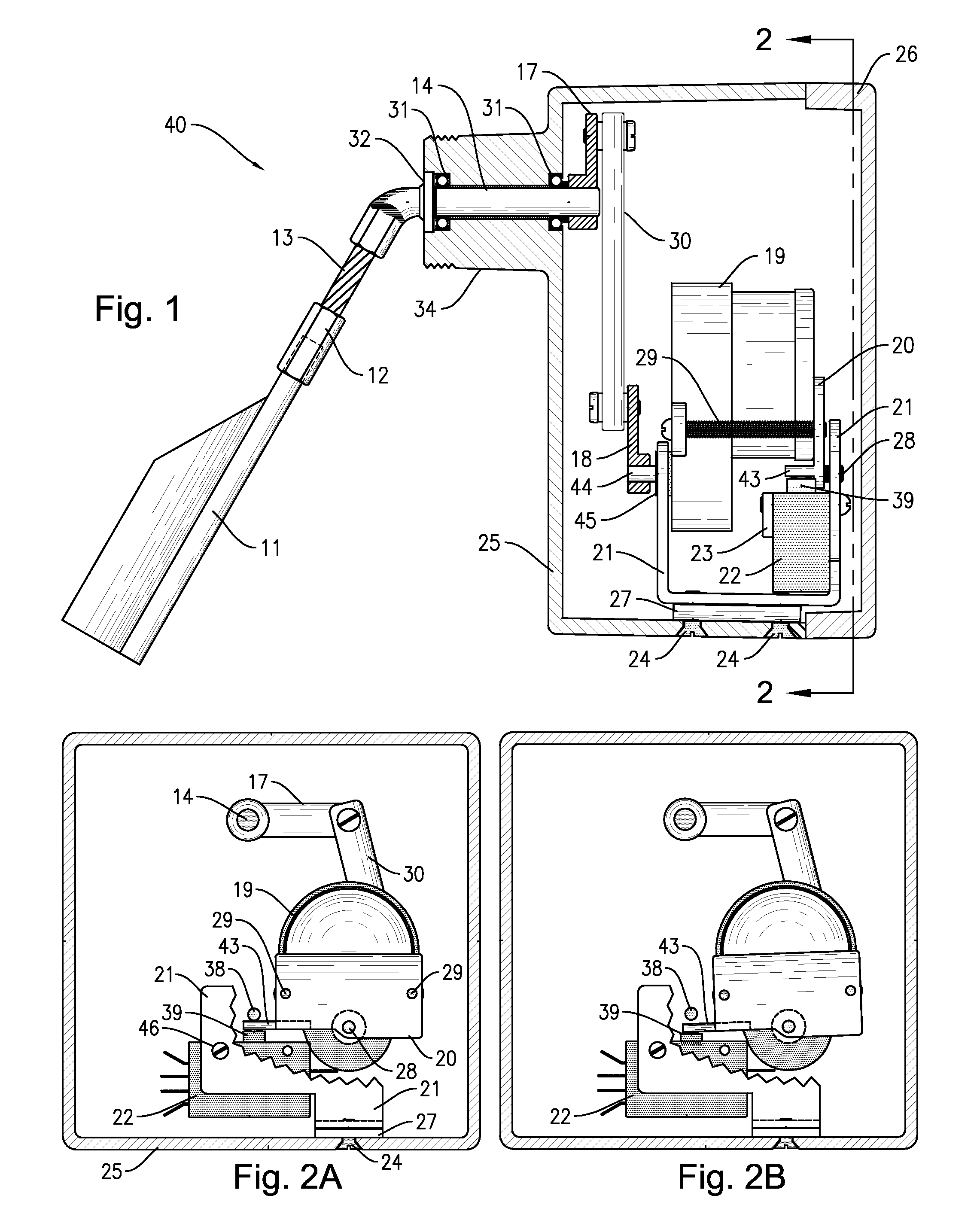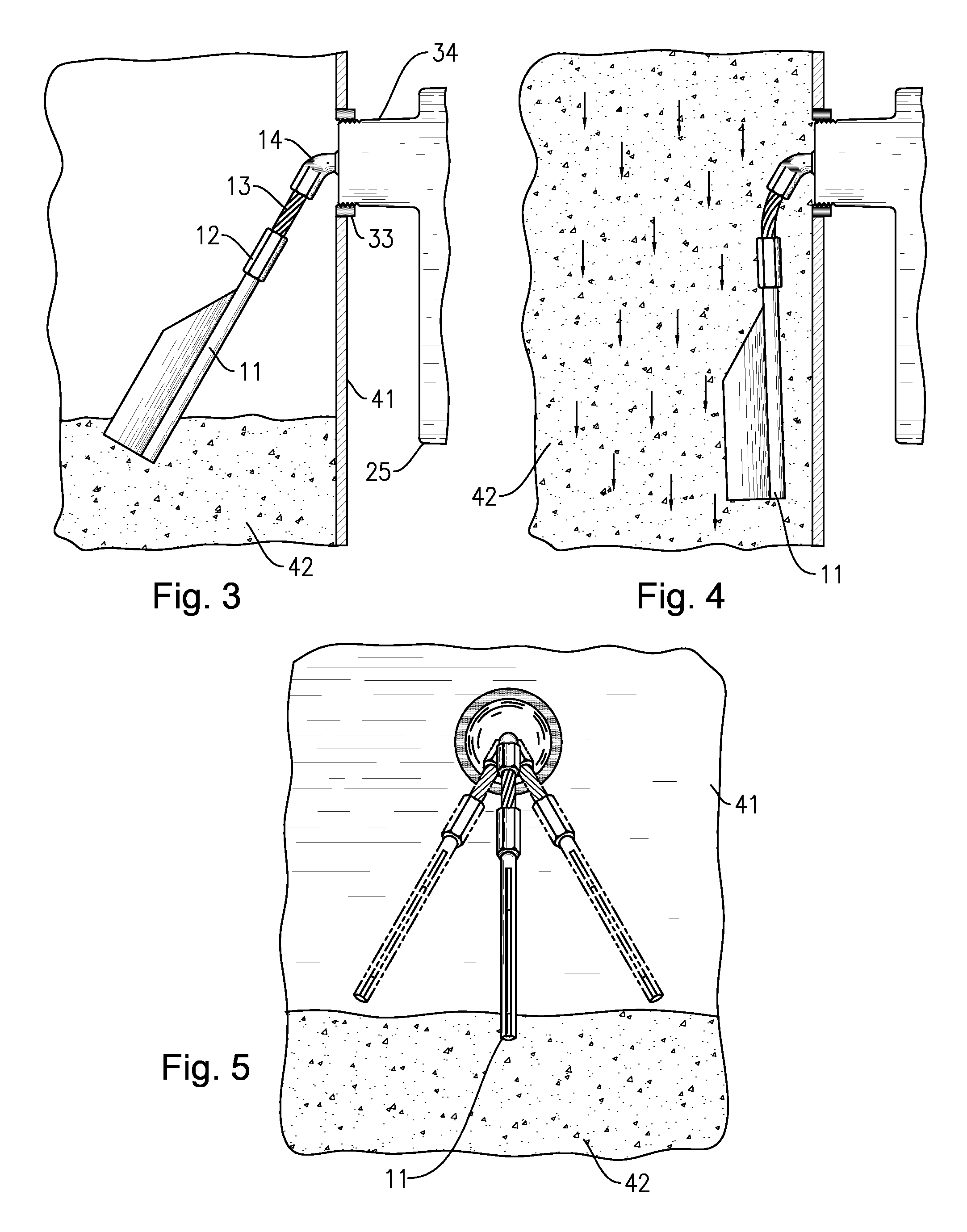Shear resistant bin level indicator
a bin level indicator and resistance technology, applied in the field of indicators, can solve the problems of affecting the accuracy of the over-travel section, being vulnerable to shear damage, etc., and achieve the effect of short exposure and immunity to shear force damag
- Summary
- Abstract
- Description
- Claims
- Application Information
AI Technical Summary
Benefits of technology
Problems solved by technology
Method used
Image
Examples
Embodiment Construction
[0028]For purposes of illustration, a preferred embodiment of the present invention has been depicted as a bin level indicator 40 incorporating a hollow housing body 25 and a housing cover 26. The housing 25 includes a mounting stem 34 which engages a mounting gland 33 that is attached to a bin wall 41. Various methods such as bayonet, clamp, or set screw may be used to attach the housing to bins, silos, hoppers, chutes, or storage vessels. In FIG. 3, components within the housing 25 rotate a shaft 14 in an oscillating or rocking motion. The shaft 14 extends outside the housing 25 and attached to it, is a flexible section 13 and a flexible section fitting 12. This over-travel mechanism allows the paddle 11 to move at the urging of a bulk material 42 contained within the bin and may be constructed with various active components such as a wire rope, helical coil, or spring. Attached to the fitting 12 is a paddle 11 which is designed to contact a material 42 in the storage bin. In vari...
PUM
 Login to View More
Login to View More Abstract
Description
Claims
Application Information
 Login to View More
Login to View More - R&D
- Intellectual Property
- Life Sciences
- Materials
- Tech Scout
- Unparalleled Data Quality
- Higher Quality Content
- 60% Fewer Hallucinations
Browse by: Latest US Patents, China's latest patents, Technical Efficacy Thesaurus, Application Domain, Technology Topic, Popular Technical Reports.
© 2025 PatSnap. All rights reserved.Legal|Privacy policy|Modern Slavery Act Transparency Statement|Sitemap|About US| Contact US: help@patsnap.com



